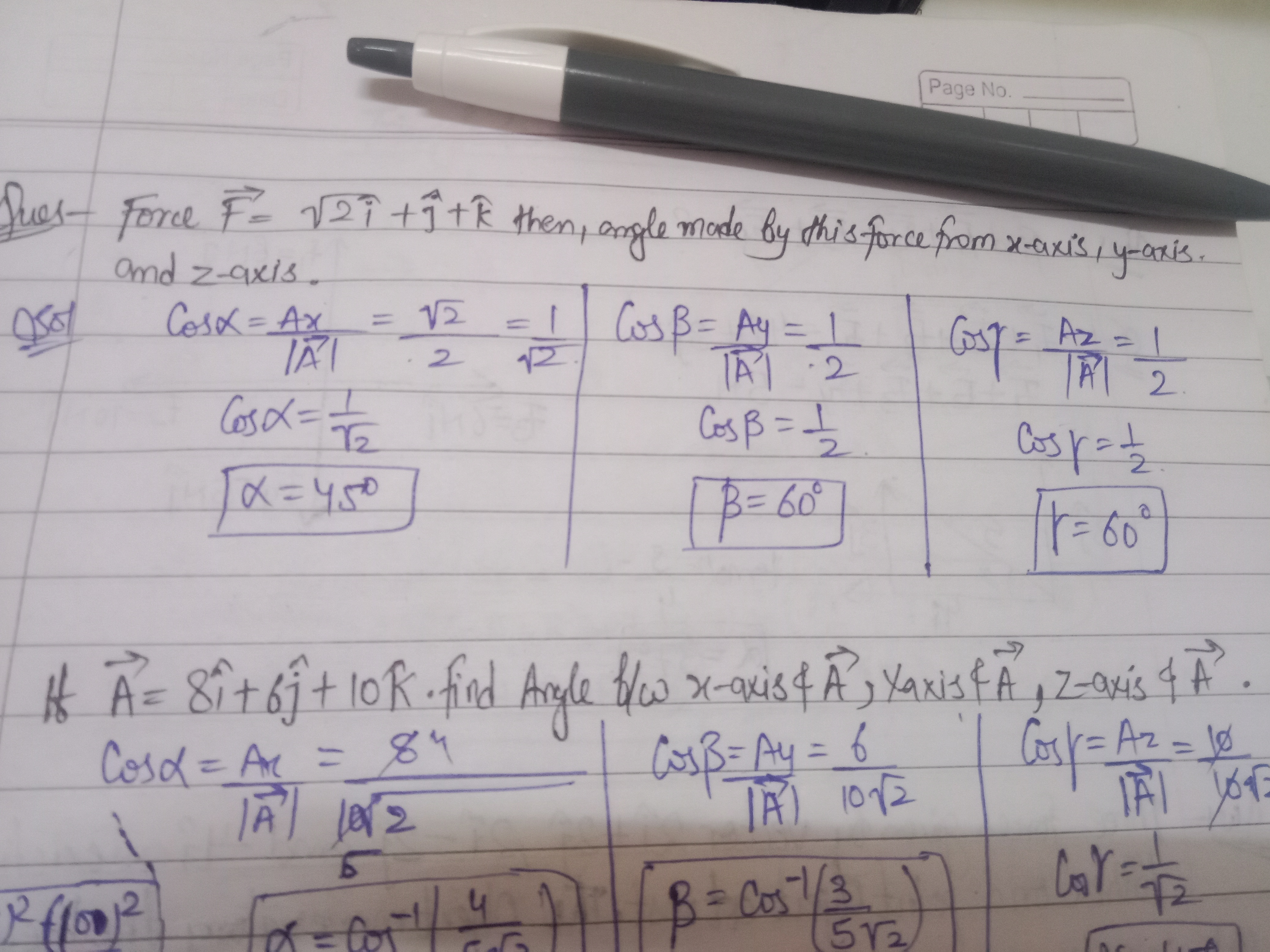If A = 8i + 6j + 10k, find the angles made by this vector with the x-axis, y-axis, and z-axis.

Understand the Problem
The question is asking to find the angles made by a given force vector with the x-axis, y-axis, and z-axis. It involves using trigonometric relationships to compute these angles based on the components of the vector.
Answer
The angles with the axes are approximately: - x-axis: \( 60.51^\circ \) - y-axis: \( 74.05^\circ \) - z-axis: \( 45^\circ \)
Answer for screen readers
The angles made by the vector ( \vec{A} ) are:
- Angle with x-axis: ( \alpha \approx 60.51^\circ )
- Angle with y-axis: ( \beta \approx 74.05^\circ )
- Angle with z-axis: ( \gamma \approx 45^\circ )
Steps to Solve
-
Identify the components of the vector The given vector is ( \vec{A} = 8\hat{i} + 6\hat{j} + 10\hat{k} ). We can identify the components as:
- ( A_x = 8 )
- ( A_y = 6 )
- ( A_z = 10 )
-
Calculate the magnitude of the vector To find the angles, first compute the magnitude ( |\vec{A}| ): $$ |\vec{A}| = \sqrt{A_x^2 + A_y^2 + A_z^2} = \sqrt{8^2 + 6^2 + 10^2} = \sqrt{64 + 36 + 100} = \sqrt{200} = 10\sqrt{2} $$
-
Calculate the angle with the x-axis Using the cosine relationship: $$ \cos \alpha = \frac{A_x}{|\vec{A}|} \ \cos \alpha = \frac{8}{10\sqrt{2}} \ \alpha = \cos^{-1} \left( \frac{8}{10\sqrt{2}} \right) $$
-
Calculate the angle with the y-axis Using the cosine relationship: $$ \cos \beta = \frac{A_y}{|\vec{A}|} \ \cos \beta = \frac{6}{10\sqrt{2}} \ \beta = \cos^{-1} \left( \frac{6}{10\sqrt{2}} \right) $$
-
Calculate the angle with the z-axis Using the cosine relationship: $$ \cos \gamma = \frac{A_z}{|\vec{A}|} \ \cos \gamma = \frac{10}{10\sqrt{2}} \ \gamma = \cos^{-1} \left( \frac{10}{10\sqrt{2}} \right) $$
The angles made by the vector ( \vec{A} ) are:
- Angle with x-axis: ( \alpha \approx 60.51^\circ )
- Angle with y-axis: ( \beta \approx 74.05^\circ )
- Angle with z-axis: ( \gamma \approx 45^\circ )
More Information
The angles provide insight into the direction of the vector in three-dimensional space. They help to illustrate how the vector is oriented with respect to each of the coordinate axes, which is crucial in applications involving forces, velocities, or any vector-related computations.
Tips
- Confusing components when calculating angles with respective axes.
- Forgetting to take the inverse cosine after finding the cosine values.
- Failing to calculate the magnitude of the vector correctly, which leads to incorrect angle calculations.
AI-generated content may contain errors. Please verify critical information